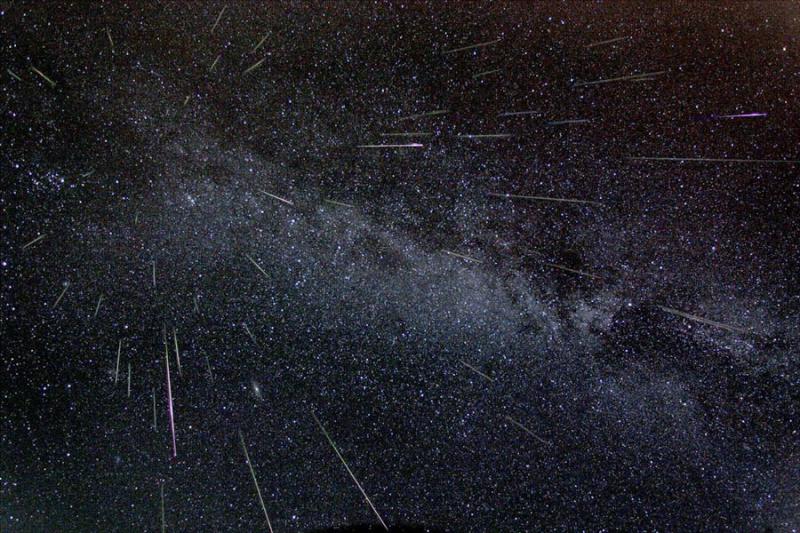
|
Credit & Copyright: Fred Bruenjes
Explanation:
Tonight is a good night to see meteors.
Comet dust will rain down on planet Earth, streaking
through dark skies in the annual
Perseid meteor shower.
While enjoying the
anticipated space weather, astronomer
Fred Bruenjes recorded a series of many 30 second long exposures
spanning about six hours on the night of 2004 August 11/12 using a
wide angle lens.
Combining those frames which captured
meteor flashes, he produced
this dramatic view of the
Perseids of summer.
Although the comet dust particles are traveling parallel
to each other, the resulting shower meteors clearly seem to
radiate from a single point on the sky in the
eponymous
constellation Perseus.
The radiant effect is due to
perspective, as the parallel
tracks appear to converge at a distance.
Bruenjes notes that there are 51 Perseid meteors in
the composite image,
including one seen nearly head-on.
This year, the Perseids Meteor Shower is expected to peak
after midnight tonight, in the moonless early morning hours of August 12.
|
January February March April May June July August September October November December |
| ||||||||||||||||||||||||||||||||||||||||||||||||
NASA Web Site Statements, Warnings, and Disclaimers
NASA Official: Jay Norris. Specific rights apply.
A service of: LHEA at NASA / GSFC
& Michigan Tech. U.
Based on Astronomy Picture
Of the Day
Publications with keywords: meteor shower - Perseids
Publications with words: meteor shower - Perseids
See also:
- APOD: 2025 August 21 Á Mostly Perseids
- APOD: 2025 August 20 Á Perseid Meteors from Durdle Door
- APOD: 2025 August 12 Á Perseids from Perseus
- APOD: 2025 August 3 Á Milky Way and Exploding Meteor
- APOD: 2024 December 10 Á The Great Meteor Storm of 1833
- APOD: 2024 August 12 Á Perseid Meteors over Stonehenge
- APOD: 2024 August 11 Á Animation: Perseid Meteor Shower
